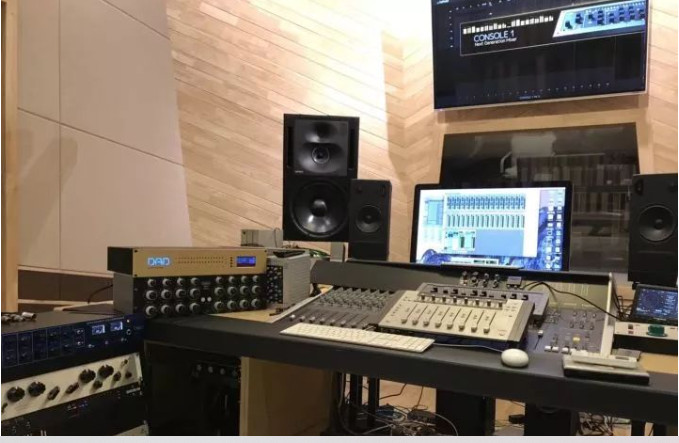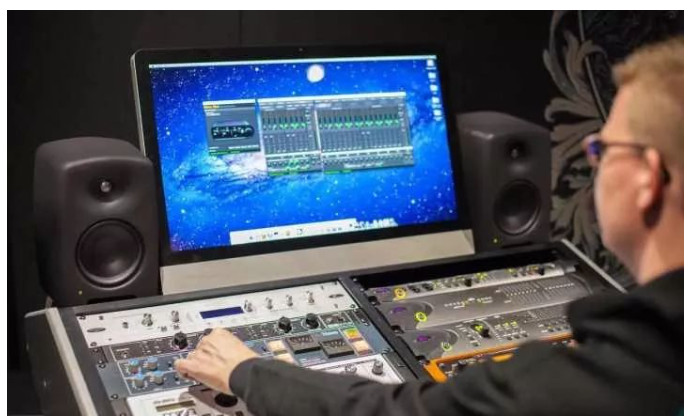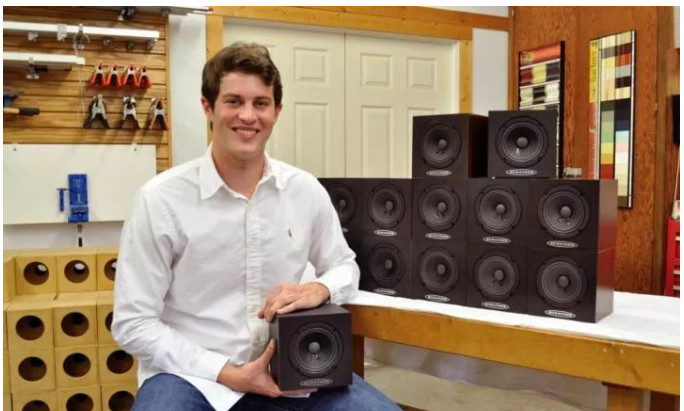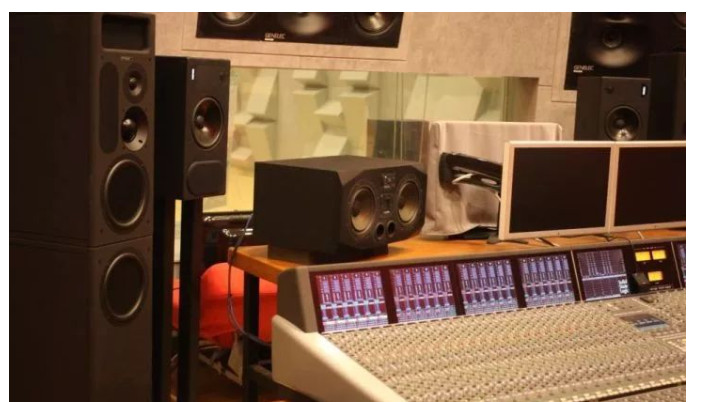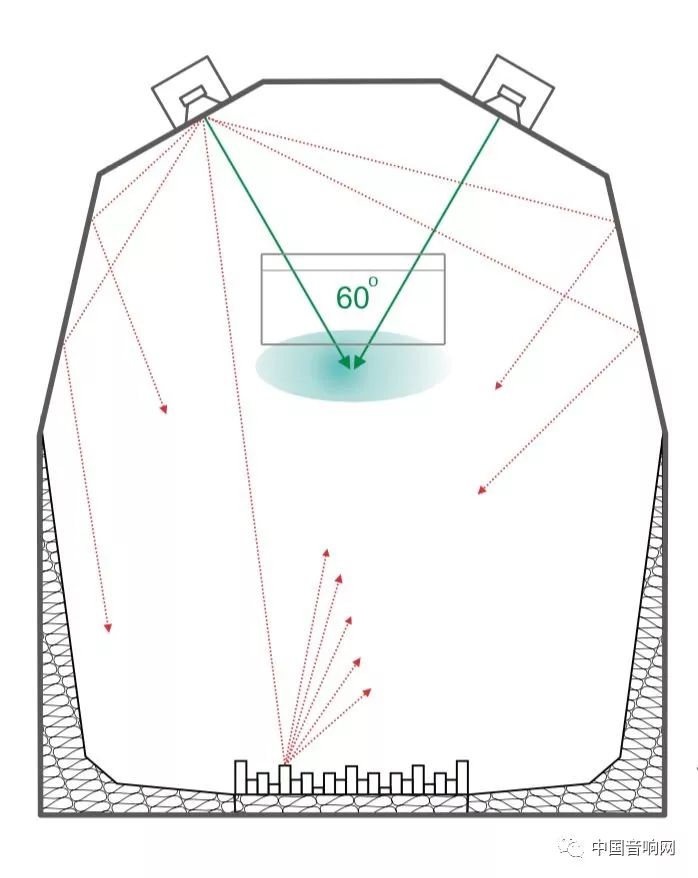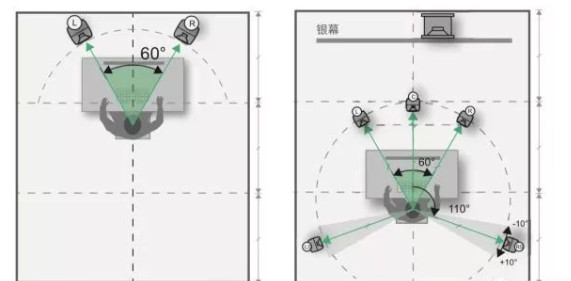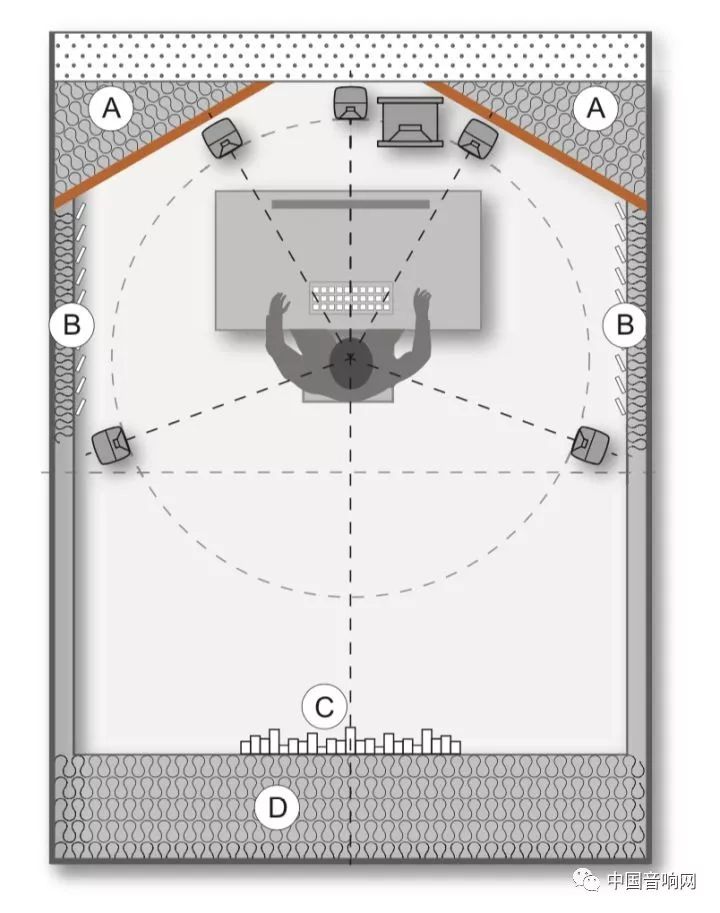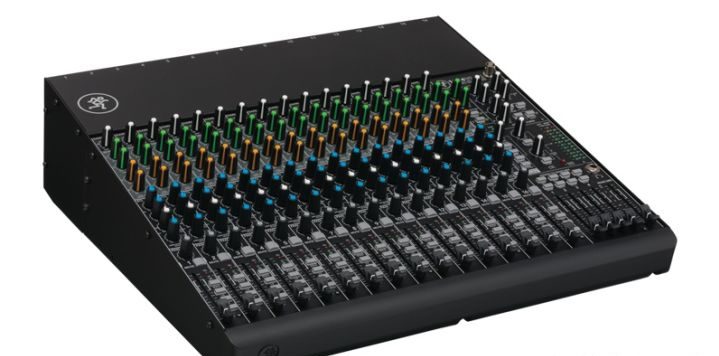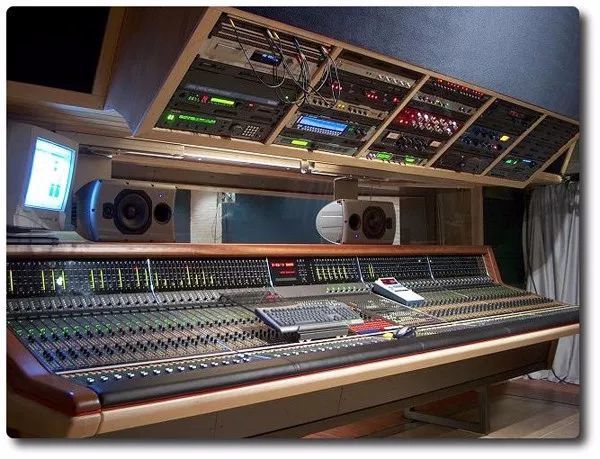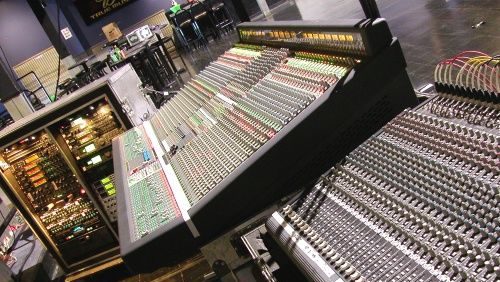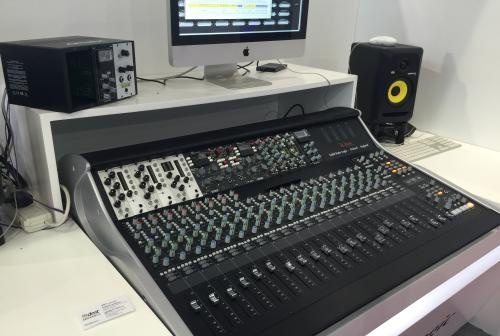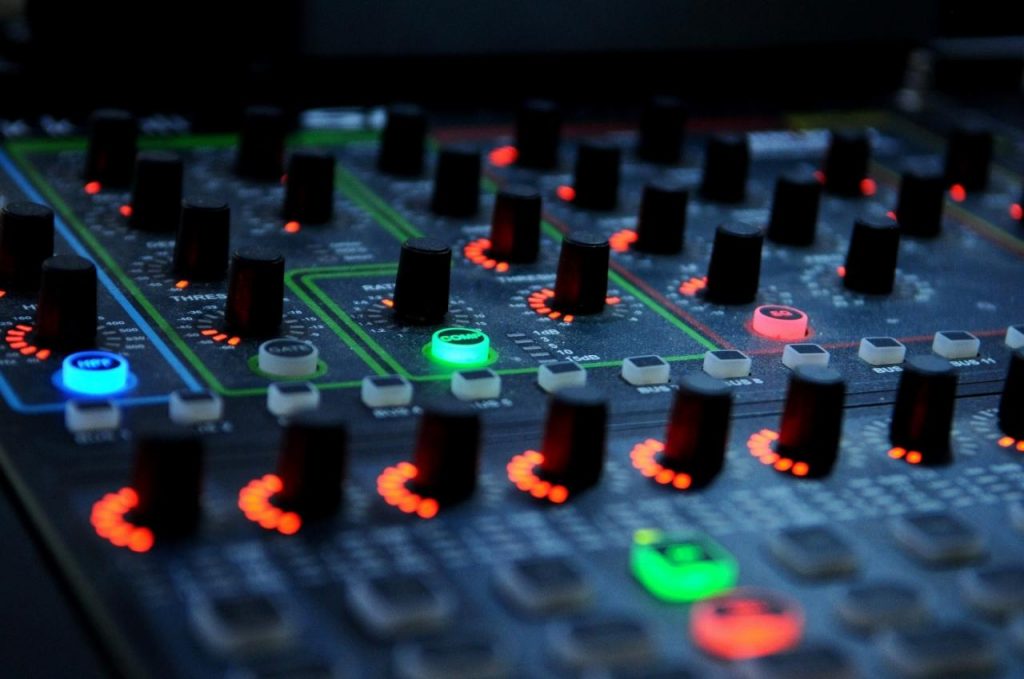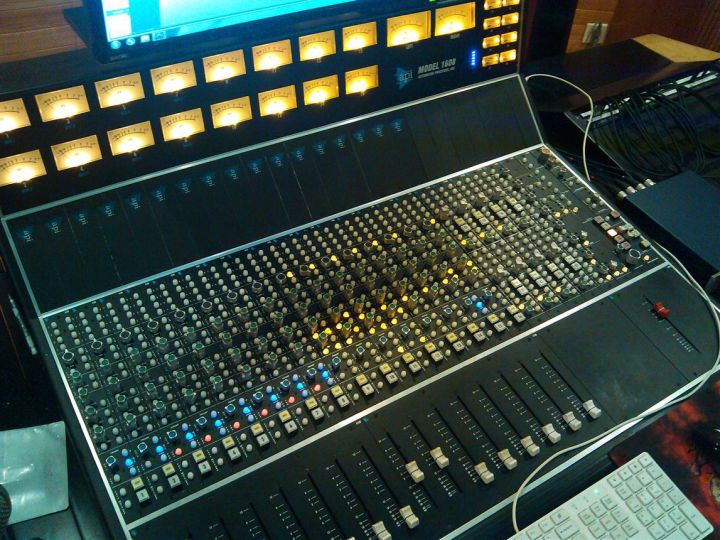Monitor speakers are an extension of the ear, how much budget is invested in speakers, the joy of creation and appreciation, and the improvement of mixing quality are still the most obvious. This article briefly introduces the types of monitor speakers, why professional recording studios use multiple pairs of monitor speakers, and the placement of monitor speakers.
Types of monitor speakers
Regardless of the size of the studio, there are several pairs of speakers used, and the monitor speakers are roughly divided into three types:
– Mid- and far-field monitor speakers
– Nearfield monitor speakers
– Contrast error correction speakers
Mid and far field monitor speakers
Mid- and far-field monitors, also known as full-band monitors or main monitors. In the past, the mid-to-far field was generally placed behind the mixer, but now it is generally embedded in the wall along with the design and construction of the recording studio to integrate with the entire room. The reason why it is called a full-band speaker is that only when the speaker reaches such a volume, it can completely and accurately cover the human hearing frequency range of 20Hz-20KHz.
Mid- and far-field speakers have obvious advantages in expressing large scenes, expressing the depth and layering of music, and listening to low-frequency dives. But doing more detailed editing, adjusting individual timbres, sometimes it is not so sure to hear it on the nearfield monitor
Mid- and far-field monitors are expensive, starting at 30,000 to 100,000, and ideally for a pair of 150,000-200,000. And it has strict requirements on the acoustic environment of th
e room, which is not affordable for most home studios, usually purchased by units, so whether you have a pair of excellent mid- and far-field monitor speakers, which are used as home studios and professional recording studios, mixing One of the hallmarks of the studio. Nearfield monitors still dominate the home studio.
Nearfield monitor speakers
Near-field monitor speakers are the most common monitoring equipment in small studios and home recording studios. The more commonly used sizes are 5-inch, 6-inch, and 8-inch two-way speakers.
Near-field monitor speakers are more suitable for listening at a distance of about one meter. In terms of frequency response, near-field monitor speakers can be more accurate in mid-to-high frequency performance, and the details in the sound can also be expressed more clearly. However, due to the size and design power, it is not ideal in terms of low-frequency diving, and the sound field and depth are a circle smaller than those of mid- and far-field speakers.
The lower limit of low-frequency playback is determined by the size of the woofer. The lowest fundamental frequency of the bass is 41 Hz. The 5-inch bass can dive to about 55Hz, and the 6-inch can reach about 45Hz. Mixing on a near-field speaker with a small bass size (less than six inches) makes it difficult to manage the low frequency of the song as easily as in the mid- and far-field monitor speakers, and the low frequency is the foundation of the entire music. If you want to mix on field monitors, be extra careful with low frequencies.
Hierarchies like kick drum bass don’t work well on smaller nearfield monitors and are therefore difficult to process. So mixing should start at at least six inches, and eight inches is ideal. However, for general arrangement, music appreciation, and application scenarios that do not have strict requirements for low-frequency performance, the accuracy of 5-inch and 6-inch near-field monitoring is also sufficient.
Contrast error correction speakers
This type of speaker is not used for mixing, and the mixing mainly uses near-field and mid-field speakers, and it is not suitable for listening to songs. It is used for comparison and error correction when the recording and mixing enter a certain stage, and the bottleneck is indecisive. The representative models of comparative error correction speakers are: YAMAHA NS10, Auratones 5C, Avantone MixCube. The above-mentioned comparison and error correction speakers are all very unpleasant, and basically have no musical taste, but they can easily expose the problems in the works, such as frequency defects, proportion imbalance and so on. Therefore, contrast correction speakers are also essential in mixing studios.
Why use multiple pairs of monitors
Professional recording studios usually have at least a pair of main monitors and a pair of nearfield monitors. A more mature home studio should have at least two pairs of near-field monitors, or use a pair of 8-inch monitors as the main monitor, and a set of wrong speakers.
Because there is no such thing as a perfect pair of speakers. Different types and sizes of speakers have their advantages and disadvantages as well. So a mix often needs to be compared and auditioned repeatedly on two or more pairs of speakers. Multiple pairs of monitor speakers can form a role of mutual confirmation, which is easy to pick mistakes and find balance.
Monitor speaker placement
Most of the problems with mixing works are related to the monitoring environment and the placement of the monitor speakers. Subjective normalized hearing is also disrupted if the wrong sound is heard over time. Many people have been monitoring speakers at home for several years, but the placement of the speakers is not correct. Whenever I see an audiophile swinging a pair of expensive speakers around, I snicker inwardly.
The ideal room state is shown below, and most studio control rooms are designed this way. But in ordinary houses, bedrooms, temporary buildings, and environments without strict acoustic design, how to place monitor speakers? Here are some principles for reference.
Based on past experience, I will briefly summarize the main points of speaker placement in non-standard studio environments.
First, the back of the speaker should not be against the wall, and the left, right and rear of the speaker should not be against the corner of the wall. Ordinary rooms are generally irregular in shape, so at least one meter of space should be left on both sides of the left and right speakers. If the distance is too close to the corner, the sound you hear will bounce back through the wall to form multiple reflections, resulting in two speakers in the tone. , there will even be a noticeable difference in loudness.
Second, place the speakers in strict accordance with the equilateral triangle. After determining the listening position, use the ruler directly to measure the most accurate, and the sound is different within one centimeter. If you move it for a long time, it is better to use a ruler to measure the efficiency. If the position is right, the sound is almost right. If there is no condition to put a 120cm equilateral triangle, you can consider a 90cm small equilateral triangle.
Third, in principle, there should be no obstacles between the speaker and the ear. A bottle and a water cup will cause changes in the sound. Professionally speaking, it is called comb filter effect. Displays also destroy the sound field to varying degrees. Therefore, many recording studios choose to use a projector as a monitor, or place the monitor obliquely and place it at a lower angle, so as not to block or block the speakers as much as possible.
For the setup and placement of monitor speakers, there is a booklet “Monitor Speaker Setup Guide” from Genelec, which is easy to understand and can be read for reference. The Speaker Setup Guide has a few suggestions:
Cut the corners of the front and side walls at a 30° angle using high-density materials such as cement, brick, multi-layer plasterboard, etc. If the material used is not dense enough, fill the space behind with mineral wool.
Treat sidewall surfaces with a combination of sound absorbing and diffusing materials. Note that thin porous plates can only absorb high frequencies.
If the room size is adequate, treat the back wall surface with sound absorbing and diffusing materials.
Use a lot of sound-absorbing material at the back of the room or in the ceiling to absorb low frequencies. A well-designed and installed plate resonator can also absorb low frequencies.
Install sound absorbing materials and diffusers on the ceiling of the listening area to reduce reflections from the ceiling.
Before buying a monitor speaker, you must take the room factor into consideration. If the room environment is not ideal, you will not be able to play the potential of the monitor speaker, and you will not be able to hear the correct sound.
The topic of monitor speaker selection. I didn’t plan to expand it today. Since it has been written here, I will briefly mention a few points:
The purchase of monitor speakers mainly depends on the use and budget. Although other equipment has become cheaper in recent years, the price of speakers is still rising instead of falling. Still the most expensive piece of equipment in the studio.
The speakers are extremely valuable. The tens of thousands of mid-to-high-end speakers that were bought five years ago can still be sold at a 20-10% discount or the original price if they are carefully maintained.
In extremely poor room conditions, such as small spaces, irregular shapes, and large reverberation, headphones can be more reliable than monitor speakers.
Because headphones are not suitable for wearing for a long time, if you need to work for a long time, it is possible to buy a pair of speakers with a cost of 2000-3000 yuan. With a 5-inch monitor speaker at this price, it is no problem to listen to the samples normally, but if you want to really listen To know the level and depth of music, at least 10,000 yuan to start.
The dimensional accuracy of the speakers is not directly related. A five-inch speaker with better quality at the same price is still more accurate than a six-inch speaker, except for the slight difference in low-frequency dive.
If you have any questions about the purchase of monitor speakers, please leave a message in the comment area, and have the opportunity to write a separate article. It is best to give the budget and the equipment around you, and compare the purchase of monitor speakers without giving the budget, that is to play hooligans.
